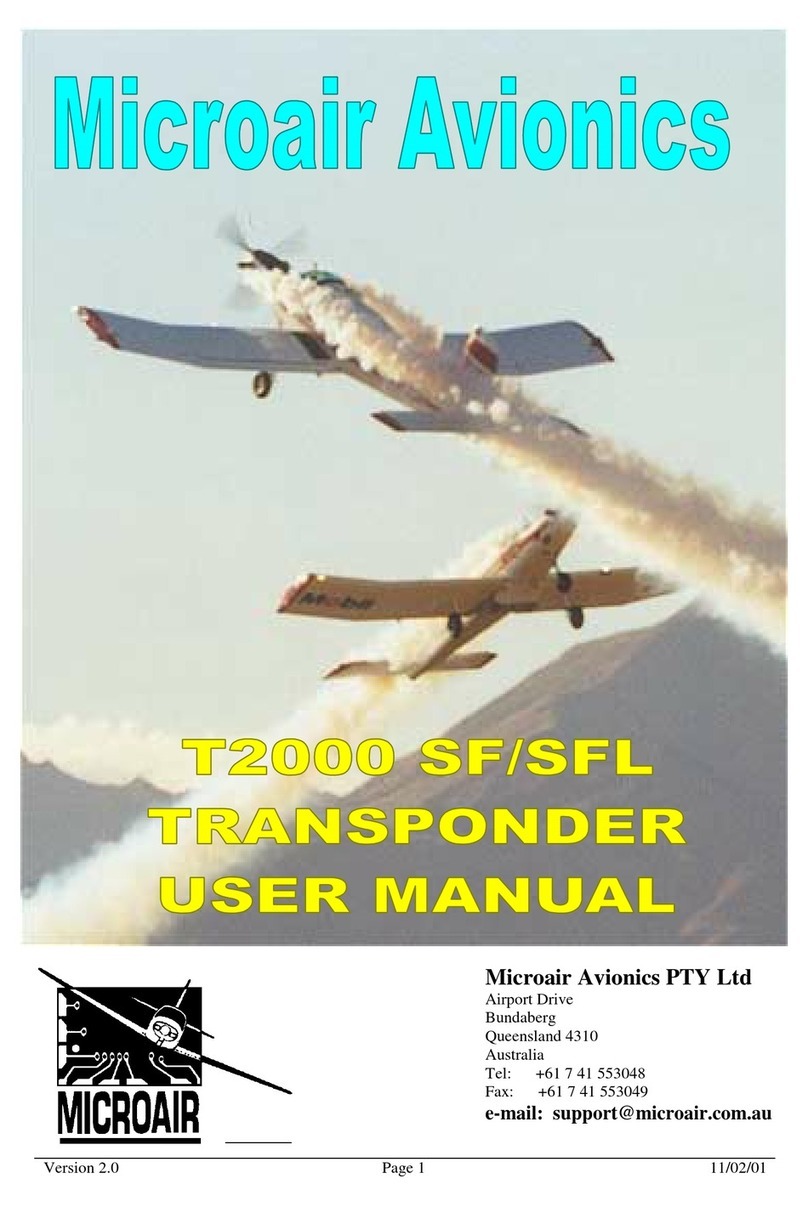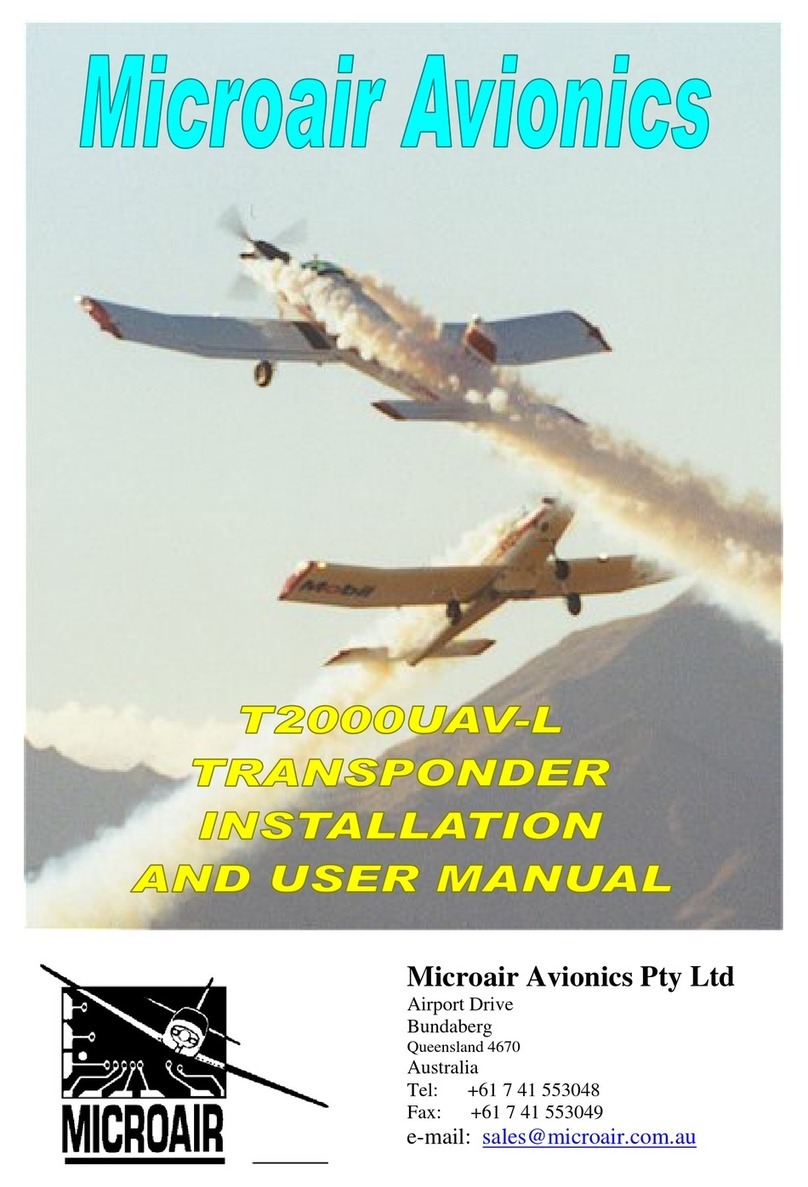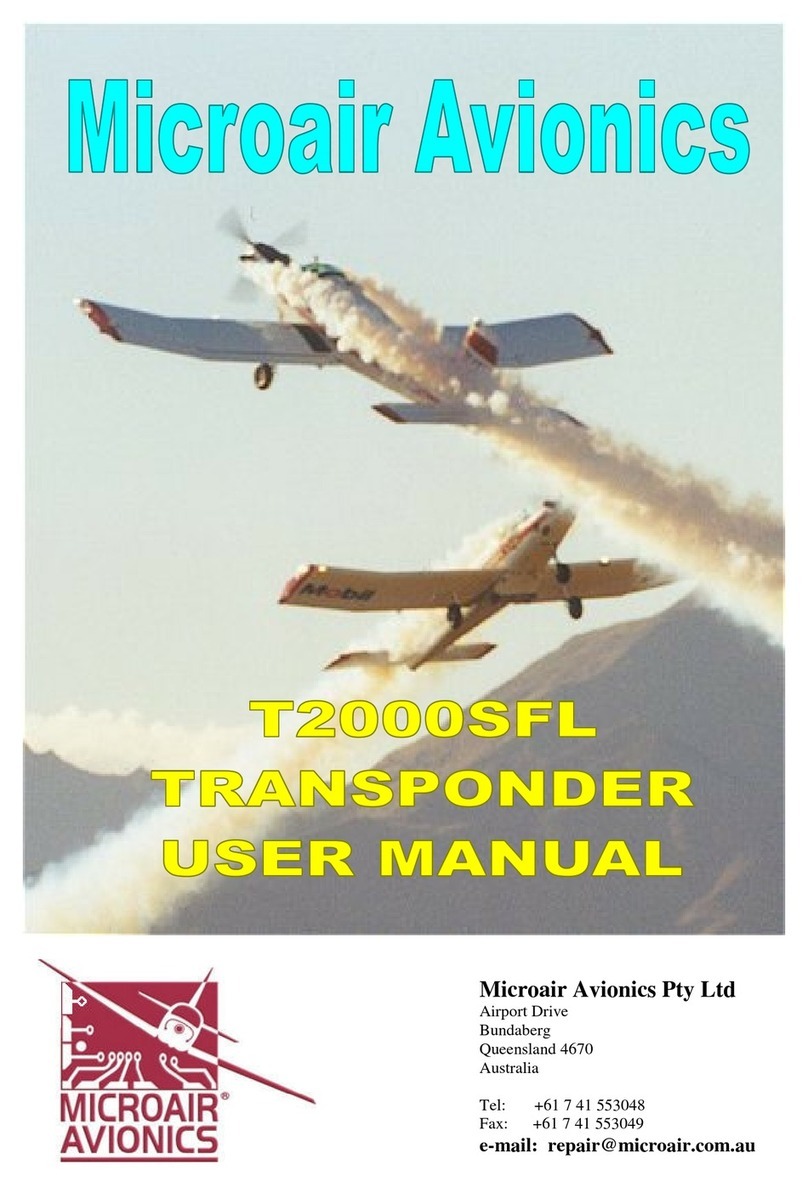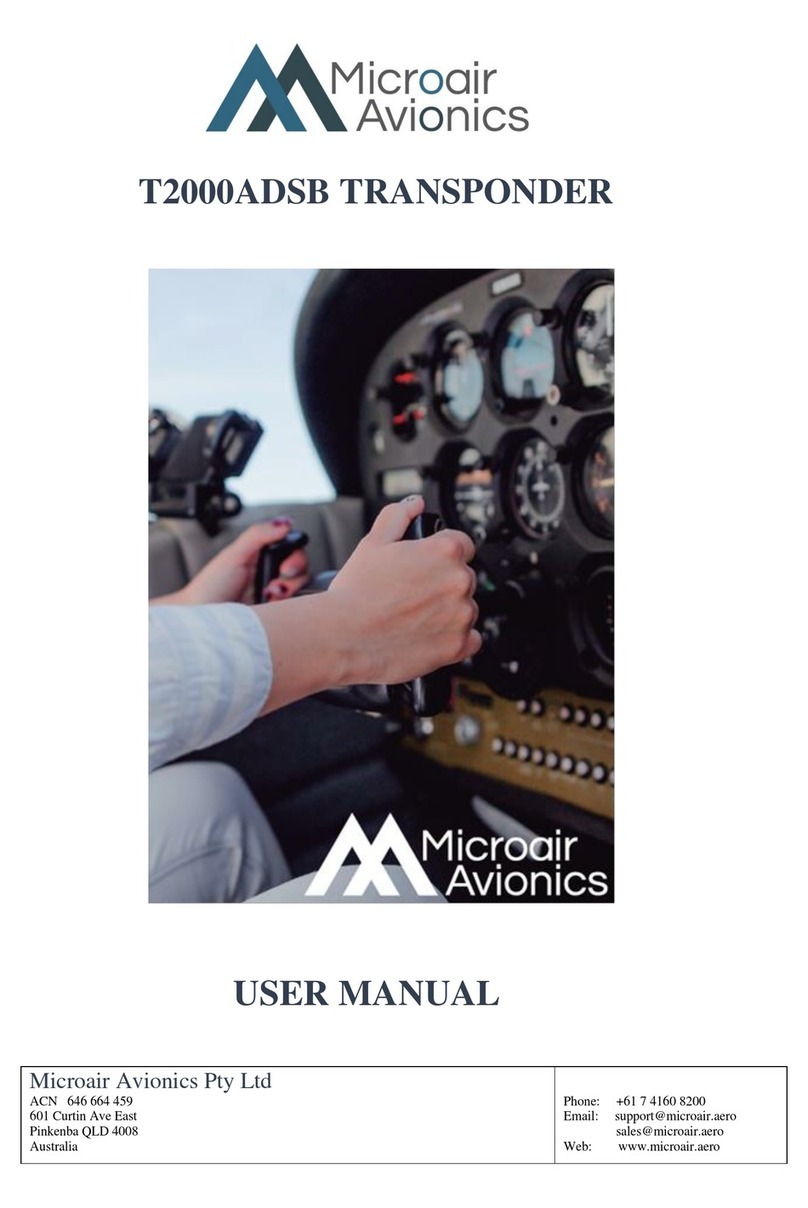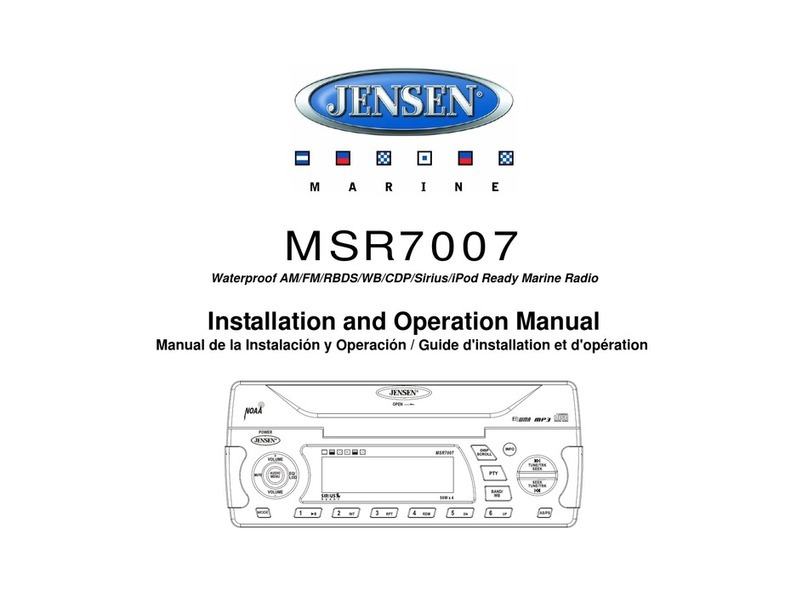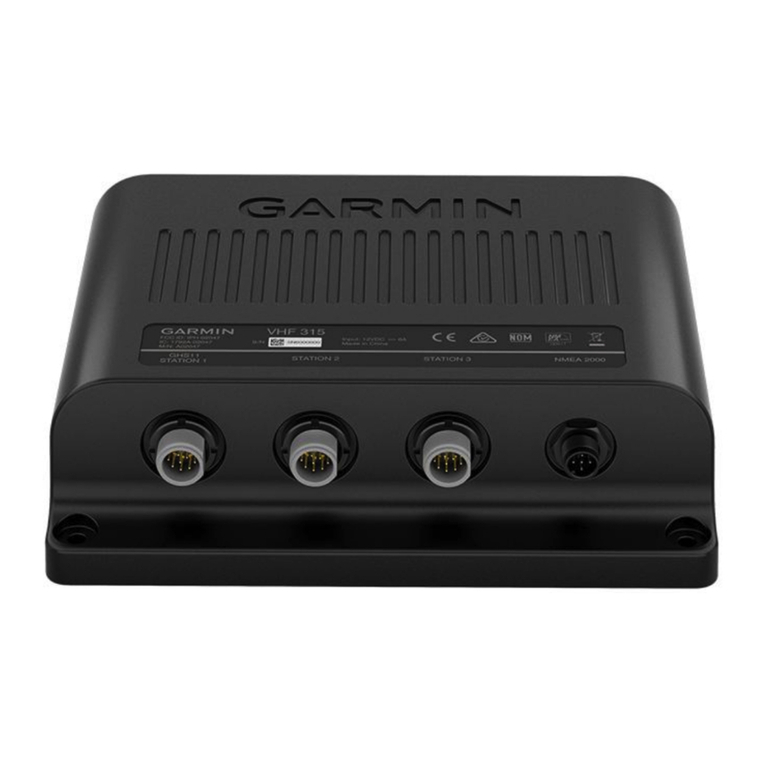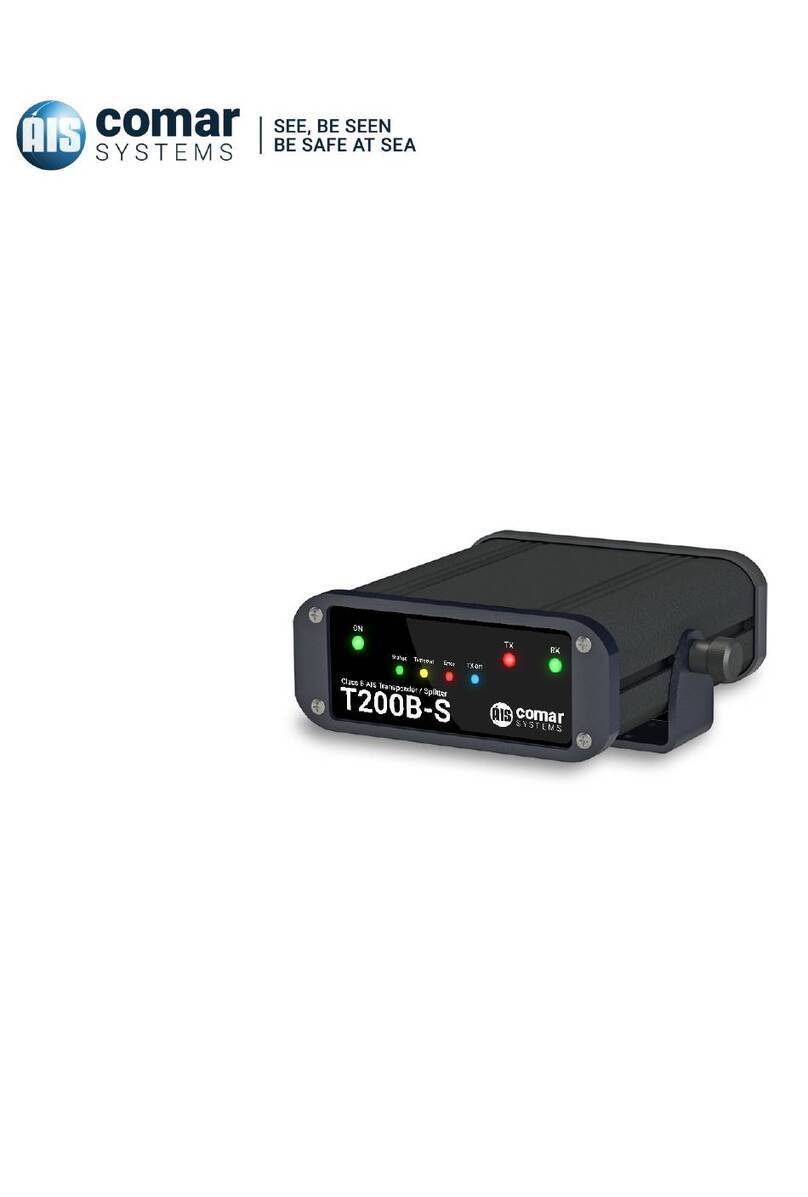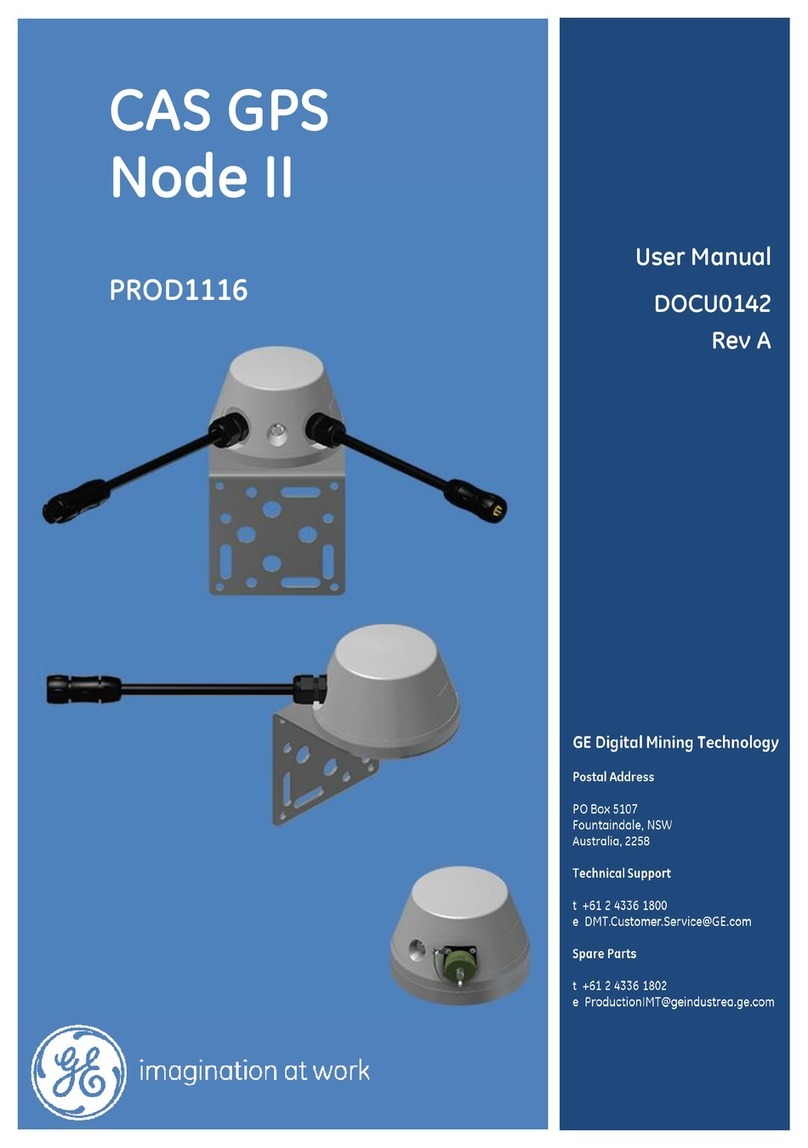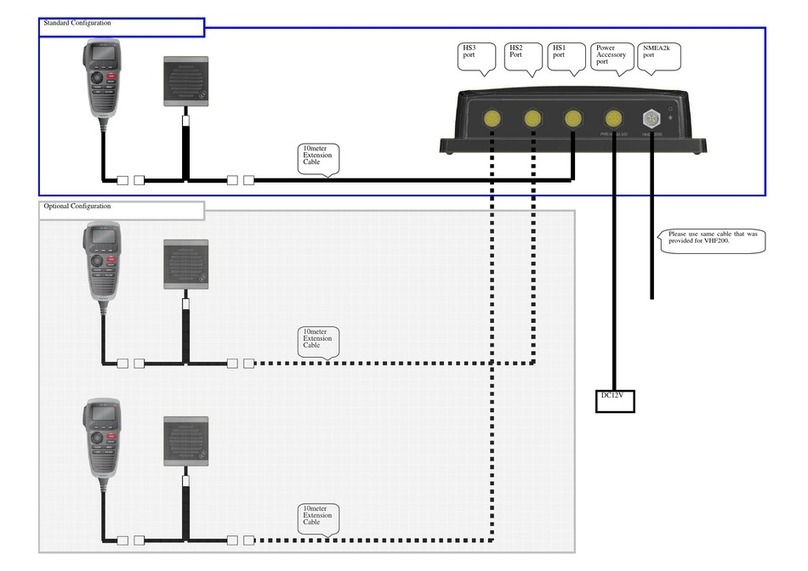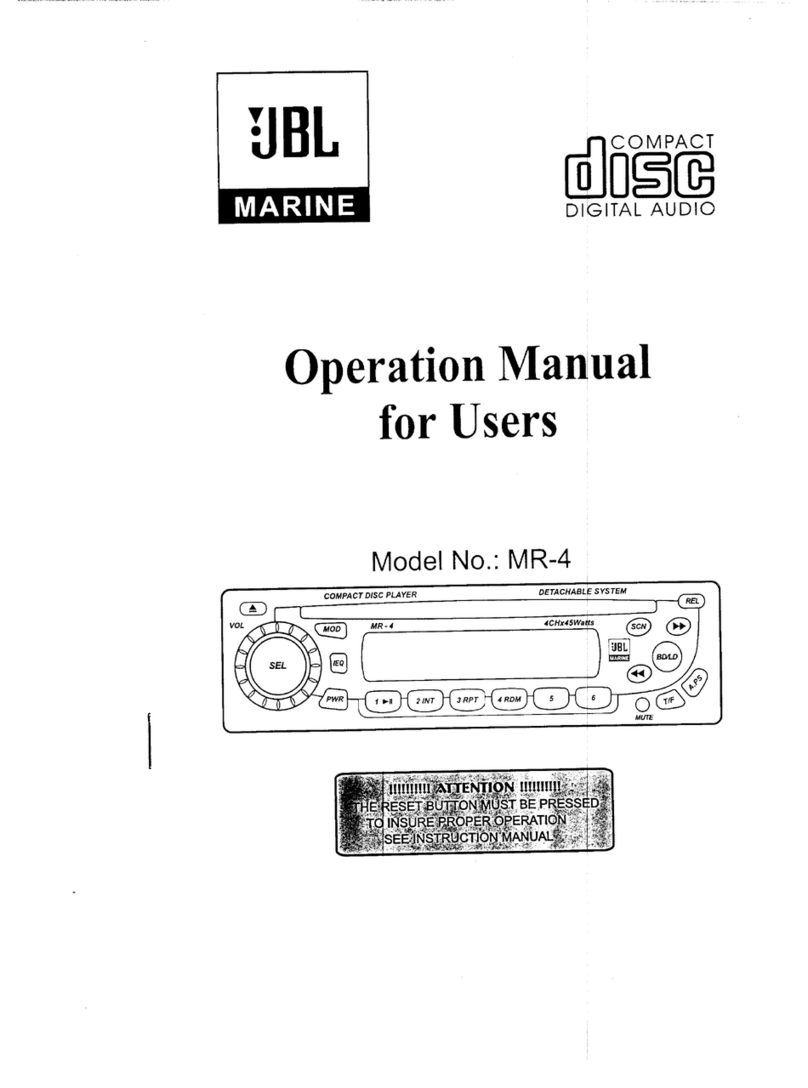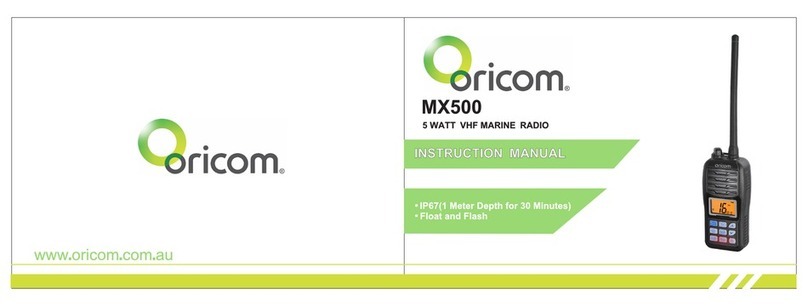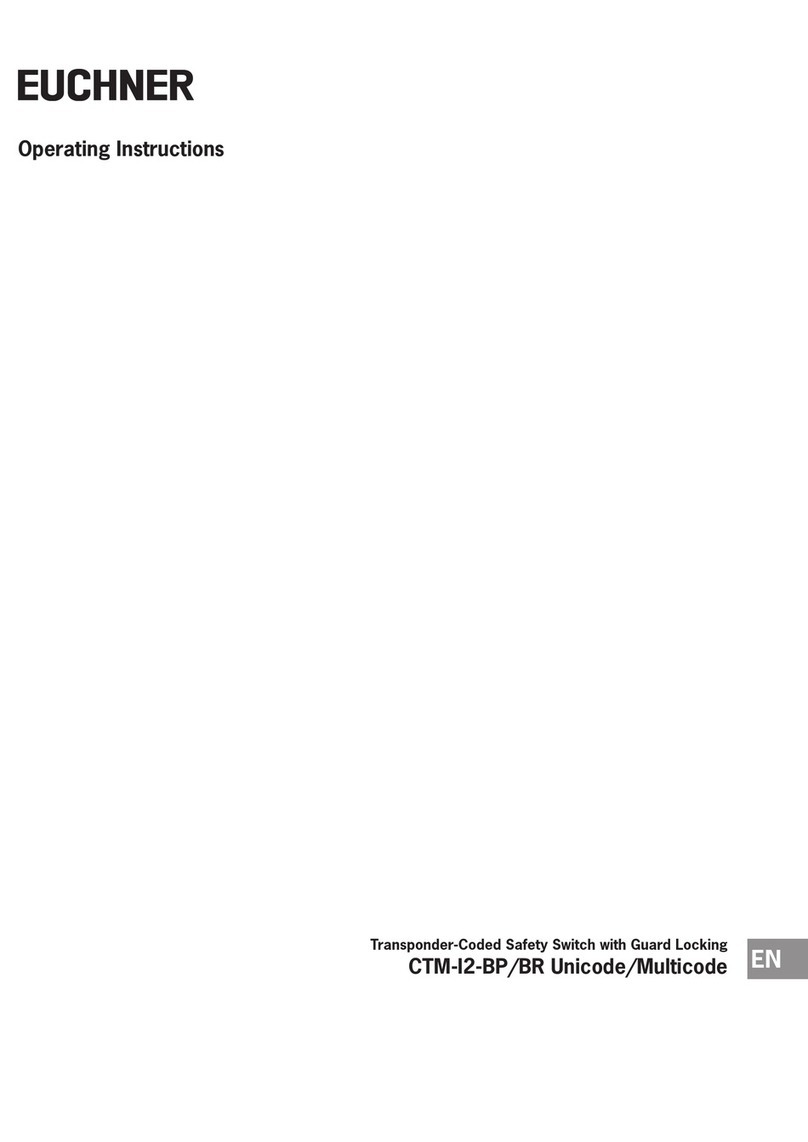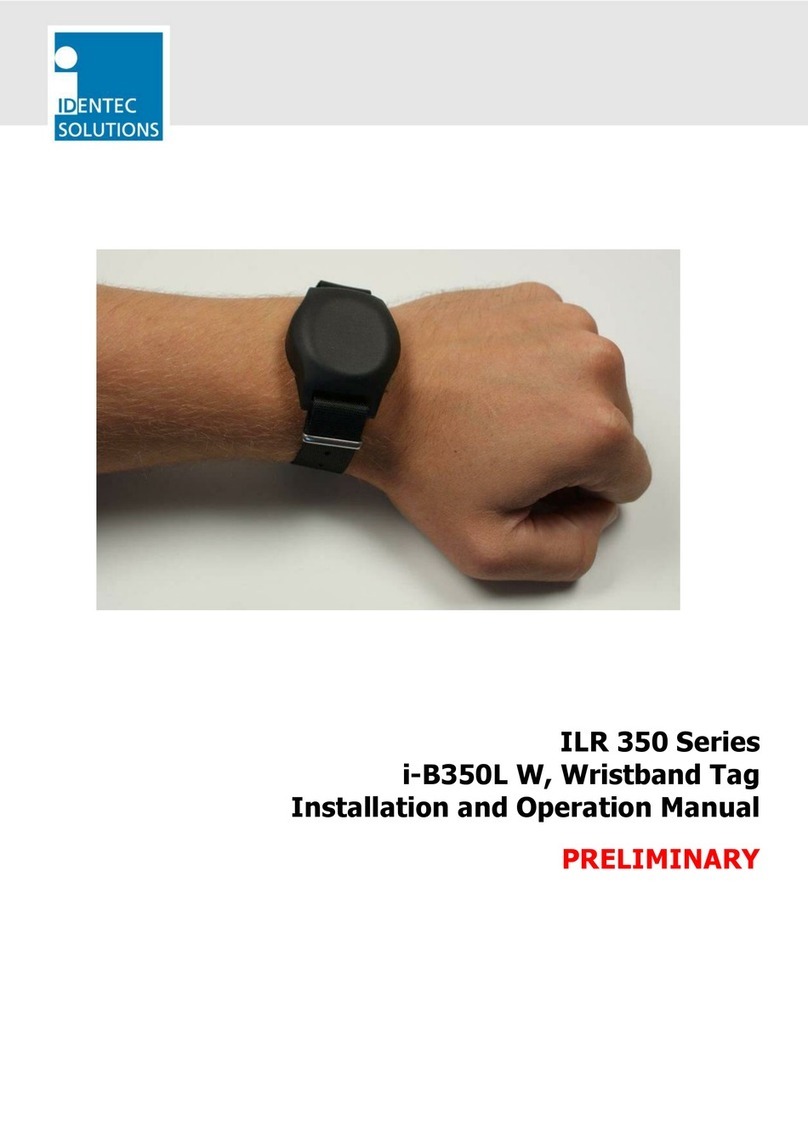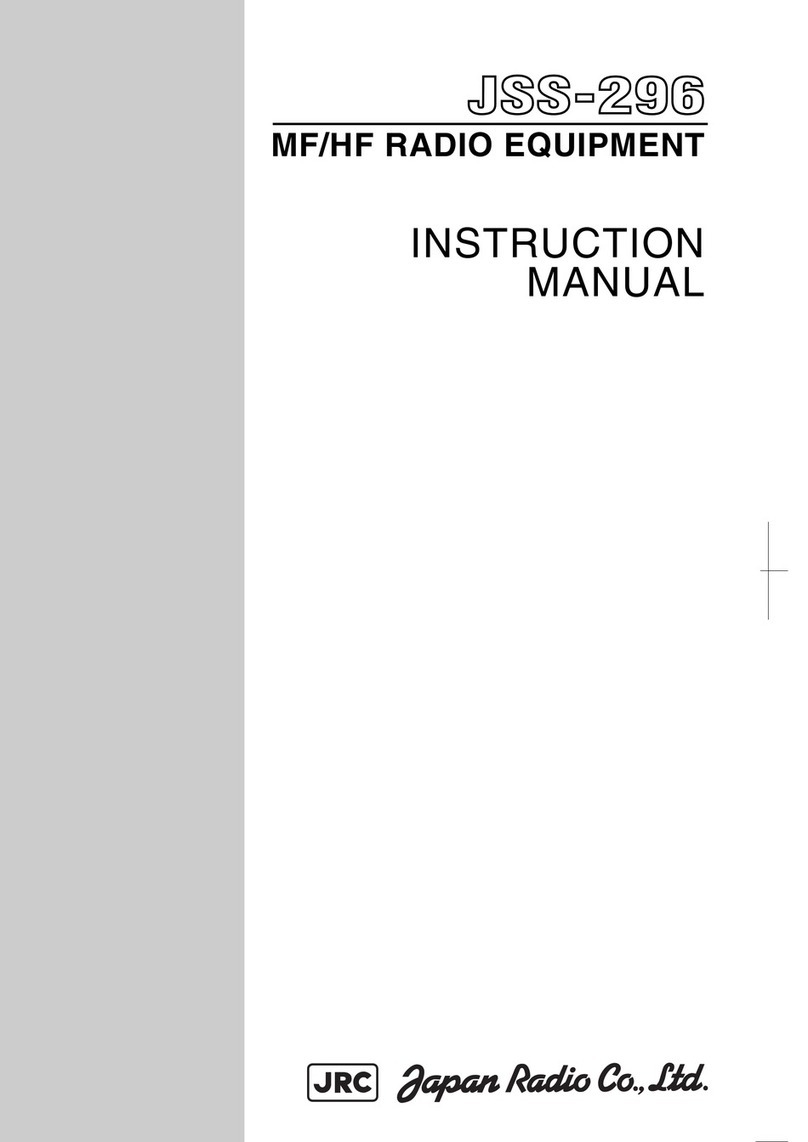MicroAir Avionics T2000ADSB User manual

T2000ADSB TRANSPONDER
INSTALLATION MANUAL
Microair Avionics Pty Ltd
ACN 646 664 459
601 Curtin Ave East
Pinkenba QLD 4008
Australia
Phone: +61 7 4160 8200
Email: support@microair.aero
sales@microair.aero
Web: www.microair.aero

T2000ADSB Transponder
Installation Manual
T2000ADSB Installation Manual 01R2
Page 2 of 33
24th Mar 2023
About This Document
Microair Avionics has developed the T2000ADSB transponder to provide for aircraft surveillance requirements of ATCRBS
Mode 3A/C with ADS-B.
This is a controlled document, and may not be copied, amended, or distributed without the prior consent of Microair Avionics
Pty Ltd.
© Microair Avionics Pty Ltd
DOCUMENT REVISION STATUS
Revision
Date
Change
01R1
21/02/23
Initial Release
01R2
24/03/23
Minor correction. Programming moved from User manual. Extended test and
calibration section from user feedback.

T2000ADSB Transponder
Installation Manual
T2000ADSB Installation Manual 01R2
Page 3 of 33
24th Mar 2023
TABLE OF CONTENTS
1.0 INTRODUCTION 4
2.0 PANEL MOUNTING 5
3.0 ALTITUDE ENCODER 6
4.0 TRANSPONDER ANTENNA & COAX CABLE 7
4.1 MOUNTING 7
4.2 GROUND PLANE 7
4.3 COAXIAL CABLE 7
5.0 GPS ANTENNA 9
5.1 DASH MOUNTED ANTENNA 9
5.2 EXTERNAL MOUNTED ANTENNA 9
6.0 WIRING 10
6.1 GENERAL WIRING 10
6.2 AUDIO BEEP 11
6.3 SUPPRESSION IN 11
6.4 SUPPRESSION OUT 11
6.5 AIR/GND (PREVIOUSLY KNOWN AS EXTERNAL STANDBY) 11
6.6 EXTERNAL IDENT 11
7.0 INITIALISATION AND SETUP 12
7.1 PROGRAM MODE 12
7.2 VFR CODE 12
7.3 ICAO CODE 13
7.4 EMITTER CATEGORY 13
7.5 AIRCRAFT ID 14
7.6 ENCODER SOURCE 14
7.7 ALTITUDE UNIT 15
7.8 BAROMETER UNIT (MB OR INHG) 15
7.9 AIR GROUND LOGIC 15
7.10 ADSB VERSION 16
7.11 EXIT PROGRAM 16
8.0 CALIBRATION & TESTING OF INSTALLATION 17
8.1 IFR6000 TEST PROCEDURE 17
8.2 ADSB TEST PROCEDURE 18
8.3 BACKGROUND INFORMATION ON INTEGRITY 19
8.3.1 INTEGRITY NUC 19
8.3.2 ACCURACY NAC 20
8.3.3 INTEGRITY SIL 20
9.0 WIRING DIAGRAMS 21
10.0 INSTALLATION DIMENSIONS 29
11.0 PIN ASSIGNMENTS 30
12.0 PANEL TEMPLATE 31
13.0 SPECIFICATIONS 32

T2000ADSB Transponder
Installation Manual
T2000ADSB Installation Manual 01R2
Page 4 of 33
24th Mar 2023
1.0 INTRODUCTION
Microair recommends you familiarise yourself with this Installation Manual BEFORE you start installing
your Microair T2000ADSB Transponder.
IMPORTANT NOTE
The T2000ADSB must be installed and tested by a suitably qualified and
authorised Avionics mechanic and all structural changes, such as the GPS
antenna installation, must be approved by a suitably qualified and authorised
engineer or the aircrafts manufacturer.
The installer is responsible for ensuring that the installation meets all
functional and regulatory requirements. If the T2000ADSB is installed by an
aircraft owner, who has the appropriate authority to do so, they remain
responsible for the ensuring the installation meets all functional and
regulatory requirements.
Microair strongly recommends the use of an ADSB/Transponder test set such
as the IFR6000 to validate the installation. Microair had an IFR6000
available for lease on a day rate basis.
If ADSB test equipment is not available then Microair recommends that as a
minimum, a structured test flight is conducted with a detailed log maintained
during the flight which can then be compared to the Flight Track Log from an
ADSB tracking provider such as FlightAware or Flightradar24. We
recommend that the flight log, the downloaded flight track and the
comparison are filed in the aircrafts records as demonstration of a compliant
installation.

T2000ADSB Transponder
Installation Manual
T2000ADSB Installation Manual 01R2
Page 5 of 33
24th Mar 2023
2.0 PANEL MOUNTING
Determine a suitable location in the instrument panel in full view of both pilots. Cut a 57mm diameter (2
¼ inch) hole with 4 x 4mm holes for the mounting screws. Dimensions for this are provided on the panel
template. Allow a minimum of 63mm (2 ½ inch) square behind the cut out, to allow clearance from other
instruments. A depth of 200mm (8 inches) is recommended to accommodate the transponder and
electrical connectors.
The T2000ADSB weighs only 685g (24oz). The four M4 x 12mm machine screws are sufficient to
support the transponder. No rear support is required unless the panel structure itself is too weak to
support the load.
IMPORTANT NOTE
Removal of the chassis screws for the purpose of attaching support
bracket is not permitted.
The drilling of holes in the chassis for any purpose is not permitted.
Filings from changing the thread of the M4 screw may cause electrical
faults. Faults of this type are NOT covered by warranty.

T2000ADSB Transponder
Installation Manual
T2000ADSB Installation Manual 01R2
Page 6 of 33
24th Mar 2023
3.0 ALTITUDE ENCODER
The T2000ADSB has three options for its altitude source:
1. An inbuilt altimeter that requires no connection to an external altimeter, mode C blind encoder
or other EFIS system for its altitude data input. If using the inbuilt altimeter, connect the
External Air Pressure static source directly to the 1/8” NPT male input on the rear side of the
transponder and select the appropriate Encoder Source from the Program Mode user menu.
2. A Gillham encoded external altimeter or mode C blind encoder.
3. A serial encoded external mode C blind encoder or EFIS system.
For customers intending to use an installed altimeter, mode C blind encoder or other EFIS altitude source
(either Gilham or serial) ensure installation is per the manufacturer’s instructions and select the
appropriate Encoder Source from the Program Mode user menu. An appropriate wiring harness is
connected to the T2000ADSB via a DB25 connector (refer wiring diagram). The power for blind mode C
encoders can be supplied from the T2000ADSB and is equal to the aircraft supply voltage. This power is
switched when the T2000ADSB is turned on.
If the encoder is to be powered separately, it is recommended that a ground wire is run between the
encoder and T2000ADSB to ensure correct switching of the data lines.
IMPORTANT NOTE
Most encoder manufacturers advise of a warm up period for their product
before altitude data is supplied. The period can typically be up to 10
minutes. For the Microair EC2002, the warm up time is only 10 seconds!
Refer to WIRING DIAGRAMS (section 9.0) for wiring details and pin assignments for commonly used
altitude encoders or EFIS, in both Gillham and serial data outputs.
IMPORTANT NOTE
If the aircraft voltage is 28V and the encoder is 14V only, a 28/14V
converter should be installed between the T2000ADSB and the encoder.
Please ensure that the voltage supply line to power the encoder is NOT
shorted to any data line or ground. The T2000ADSB will incur internal
faults if a short occurs. This type of damage is NOT covered by the
warranty.

T2000ADSB Transponder
Installation Manual
T2000ADSB Installation Manual 01R2
Page 7 of 33
24th Mar 2023
4.0 TRANSPONDER ANTENNA & COAX CABLE
The T2000ADSB requires an antenna tuned to 1090MHz.
4.1 Mounting
The transponder signal is primarily directed to ground stations (Radar sites), hence the antenna is
typically located on the underside of the fuselage. The position should give the antenna a full 360-degree
view of the horizon. The position should be away from other protrusions from the airframe, such as
footsteps, and undercarriage legs.
To avoid possible interference the antenna must be mounted a minimum of 0.3m (12 inches) away from
the T2000ADSB. The transponder antenna outputs high levels of RF energy and should be located at
least 1m (3ft) away from vulnerable part of the human body or be separated by a metal panel.
If the VHF comm antenna is already located on the underside of the fuselage, the transponder antenna
should be located at least 1 metre (3ft) away. The transponder antenna should be mounted 2 metres (78
inches) from a DME antenna, and 1.5 metres (58 inches) from the ADF sense antenna.
4.2 Ground Plane
In metal skin aircraft the skin forms the ground plane. To ensure a good electrical connection, it may be
necessary to remove paint/primer from the inside face of the skin, before attaching the antenna. This may
be resealed after the antenna is installed. On pressurised aircraft, the antenna should be sealed using RTV-
3145 or equivalent, to seal around the connector and mounting hardware. All antenna mounts should be
sealed around the outside for moisture protection, using RTV-3145 or equivalent.
In a composite aircraft the skin of the airframe cannot be used,
and a suitable ground plane must be fabricated. The ground
plane is typically an aluminium disc with a radius equal to the
height of the antenna (approx. 75mm or 3”). The antenna is
mounted in the centre of the ground plane.
The ground plane does not have to be circular however, but the
area should be approx the same size. Fibreglass aircraft can
mount the ground plane on the inside of the aircraft.
Although carbon fibre is a good reflector of RF, it is not a
suitable material for a ground plane. A metal ground plane is
ideal.
It is important to ensure that a good electrical contact is
established, as some antennas have sealing O-rings which can
isolate this connection.
4.3 Coaxial Cable
The T2000ADSB allows for 2dB cable loss from the unit to the antenna. The installer should consider
carefully what type of coaxial cable is to be used, so that this loss limit is not exceeded. The cable should
be terminated with a crimped BNC connector rated for 200Wpep and 2GHz such as the Amphenol
112514.

T2000ADSB Transponder
Installation Manual
T2000ADSB Installation Manual 01R2
Page 8 of 33
24th Mar 2023
Microair recommends the use of RG400 coax cable in accordance with the table below.
Cable
Bending
Radius
Loss @ 1Ghz
dB/m
Max Length
TX Power
RX
Sensitivity
RG400 (Mil Spec)
50mm
(2”)
0.485dB/m
3.9m
12.8ft
> 125W
< -69dBm
IMPORTANT NOTE
Do not exceed the minimum bending radius. Tight bends will introduce losses
in the cable, which may affect the performance of the transponder.
When fixing the coax cable in the airframe, do not “strangle” the cable with
tight cable ties. This can distort or damage the coax screen.
Avoid looping excess Coax cable. It is recommended that a coax cable correct
to within 300mm (1ft) be ordered (available at microair.aero). If shortening a
coax cable pay particular attention to the termination. A crimped connector
rated for operation up to 2GHz and 200W is required such as the 112514 BNC
Connector.

T2000ADSB Transponder
Installation Manual
T2000ADSB Installation Manual 01R2
Page 9 of 33
24th Mar 2023
5.0 GPS ANTENNA
The T2000ADSB requires the installation of a GPS Antenna to receive a satellite GPS signal required by
the unit. The GPS Antenna is connected to the T2000ADSB on the back of the unit via TNC connection.
Two types of GPS Antennas are recommended for operation with the T2000ADSB transponder.
5.1 Dash Mounted Antenna
For composite skinned aircraft, a dash-mounted GPS antenna can be connected to the unit and positioned
on the instrument dashboard in an unobstructed position. Maintain separation of the GPS antenna from
other antennas located on the dashboard should these be present.
The Microair dash mounted antenna uses an adhesive pad to secure the antenna to the dash. Peel the label
from the adhesive backing of the GPS antenna and firmly press the antenna into position on top of the
instrument panel.
Other GPS dash mounted antennas may require a physical fixture to be installed on the dash. Ensure to
follow the manufacturer’s instructions for the installation of your dash mounted GPS antenna in such
instances.
IMPORTANT NOTE
A magnetic fixing solution is not recommended for the GPS antenna as
this may interfere with other instrumentation present.
5.2 External Mounted Antenna
For metallic skinned aircraft, it is recommended that a TSO’d externally mounted antenna is used.
Position the GPS antenna on the upper side of the fuselage in an unobstructed position, preferably at the
highest point of the aircraft when in level flight. To the extent practicable, mount the antenna so that the
base is horizontal when the aircraft is in cruise attitude. Route the antenna cable in the most direct path
practicable and reduce the cable length to the minimum required.
Ensure to follow the manufacturer’s instructions for the installation of the Externally mounted antenna.
IMPORTANT NOTE
Avoid looping excess Coax cable. It is recommended that a coax cable
correct to within 300mm (1ft) be ordered (available at microair.aero). If
shortening a coax cable pay particular attention to the termination. A
crimped connector rated for operation up to 2GHz is required such as
the Amphenol 122372 (straight) or 122365 (right angle) TNC connector.

T2000ADSB Transponder
Installation Manual
T2000ADSB Installation Manual 01R2
Page 10 of 33
24th Mar 2023
6.0 WIRING
The T2000ADSB must be installed with a wiring harness which meets the following requirements.
6.1 General Wiring
The T2000ADSB is to be powered from the aircraft supply, via the avionics master and fuse/circuit
breaker with a maximum 5 amp rating (3 amp minimum).
IMPORTANT NOTE
The aircraft’s electrical system may produce severe transient voltages
during engine start and stop
Microair recommends that the avionics master be turned off during
engine start and stop, to prevent damage occurring to the T2000ADSB.
Damage to the transponder as a result of transient voltages is NOT
covered by the warranty.
Microair recommends that if used, the external encoder be installed and wired in accordance with the
manufacturer’s installation instructions. The encoder can be powered directly from the T2000ADSB.
It is very important to secure all D series plugs via their security screws before operation. Aircraft
vibration may disconnect a D series plug if it not secured. Wiring is to be separated from the coaxial
cables.
Microair recommends the following wire types for connection of the T2000ADSB:
Power Input
18 AWG TEFZEL 22759/16-16
Red and Black Wire
External Connections
22 AWG TEFZEL 22759/16-22
Wire or
22 AWG TEFZEL 27500-22TG1T14
Single core shielded
Encoder Power
22 AWG TEFZEL 22759/16-22
Red and Black Wire
Encoder Data
22 AWG TEFZEL 22759/16-22
White Wire
To ensure correct installation and to make future service simple, Microair recommends that all wiring be
labelled for easy identification.

T2000ADSB Transponder
Installation Manual
T2000ADSB Installation Manual 01R2
Page 11 of 33
24th Mar 2023
6.2 Audio Beep
The T2000ADSB beep function when set to ON, will emit a beep tone on this line. Audio beep should be
taken to the Auxiliary input of the aircraft’s radio or Audio Panel.
When connecting the beep function to the Microair M760 transceiver, simply join the beep line directly
to any headphone line (orange wire in factory supplied harness).
6.3 Suppression IN
The suppression IN line is used in installations with multiple transponders or DME systems to “suppress”
the T2000ADSB, to prevent concurrent transmissions, and interference. When another system transmits,
it will send a positive voltage to the suppression IN, which prevents the T2000ADSB from transmitting.
The T2000ADSB requires a minimum signal voltage of 5V. The signal voltage may not exceed 20V.
In most installations the Suppression IN can be left unconnected.
6.4 Suppression OUT
Where the T2000ADSB is used in installations with multiple transponders or DME systems, the
suppression OUT line is used to “suppress” other transponder and DME equipment installed in the
aircraft, from interfering. When the T2000ADSB transmits, it raises a positive voltage on the suppression
OUT line, which prevents the other equipment from transmitting.
The signal voltage is 5V.
In most installations the Suppression IN can be left unconnected.
6.5 AIR/GND (previously known as External Standby)
The T2000ADSB must know its airborne or surface status and provides two methods to achieve this:
1. An external switch can be wired to the T2000ADSB. This is usually a “Squat Switch” on the
undercarriage or an “Air Switch” on the wings leading edge. The switch must pull the T2000ADSB
input to ground when active but the T2000ADSB can be set for the active state to either be Surface
(NORM) or Airborne (REV). Refer to Program Mode described below.
2. GPS speed can also be used to switch between Airborne and Surface modes. Ground speeds above
35kts will cause the T2000ADSB to switch to Airborne Mode whilst ground speeds below 20kts will
cause the T2000ADSB to switch to Surface Mode.
6.6 External Ident
This line is typically wired to a momentary-ON switch, in a position more easily reached by the pilot /
co-pilot (e.g. control column). When this line is taken to ground briefly, the T2000ADSB will go through
its Ident function.
Most installations to not include an External Ident switch.
IMPORTANT NOTE
If any of the above wiring functions are not required, they can simply be
left unwired.

T2000ADSB Transponder
Installation Manual
T2000ADSB Installation Manual 01R2
Page 12 of 33
24th Mar 2023
7.0 INITIALISATION AND SETUP
On initial power up the T2000ADSB will enter Program Mode to allow the ICAO Code (sometimes call
the Mode S code) to be set. It is important that the Emitter Category and Aircraft ID are also set.
•If the ICAO Code and aircraft Registration were provided to Microair at the time of purchase then
this data may have been preset.
The following procedures provide step by step instructions to program the transponder options.
PROGRAM MODE
VFR CODE
ICAO CODE
EMISSION CATEGORY
AIRCRAFT ID
ENCODER SOURCE
ALTITUDE UNIT (ft/m)
BAROMETER UNIT (Mb/inHg)
AIR GROUND LOGIC
ADSB VERSION
EXIT PROGRAM
7.1 PROGRAM MODE
To start the T2000ADSB in PROGRAM MODE,
hold down the MODE key whilst powering the
device. Keep the MODE key held down until the
start up self test messsages have been displayed.
Each item can be adjusted to the desired value or
option by scrolling the CODE SELECT knob. The
selected value or option can be saved by pressing the
ENTER key. PROGRAM MODE then moves to
the next menu item.
NOTE: If the ICAO code is not set the T2000ADSB
will always start in PROGRAM MODE as ADSB
cannot operate without a valid code.
7.2 VFR CODE
This item sets the default VFR code which can be hot
key accessed from the V(VFR) key. For most
countries the default general aviation code is 1200.
Press ENTER key
Until VFR CODE message appears
Rotate CODE SELECT knob
Adjust the digit highlighted by the cursor.
Press CODE SELECT knob
Moves the digit to the right
Press ENTER key
The message SAVED appears briefly on the display
The display moves to ICAOCODE menu item

T2000ADSB Transponder
Installation Manual
T2000ADSB Installation Manual 01R2
Page 13 of 33
24th Mar 2023
7.3 ICAO CODE
The ICAO code is an essential part of all ADS-B
messages. The operator should check with the Civil
Aviation Authority, to ensure what the correct ICAO
code for their aircraft is.
Press ENTER key
Until ICAOCODE message appears
Rotate CODE SELECT knob
Adjust the digit highlighted by the cursor.
Press CODE SELECT knob
Moves the digit to the right
Press ENTER key
The message SAVED appears briefly on the display
The display moves to EMIS CAT menu item
The ICAOCODE is limited to the hex-decimal character set of numbers 0-9, and letters A-E.
IMPORTANT NOTE
All ADS-B message include the ICAOCODE data. No ADS-B operation
will be possible if the ICAOCODE is not entered. The unit will not
operate until this code is set.
7.4 Emitter Category
The emitter category is an essential piece of ADS-B
data, which is used to describe the aircraft “type”. The
T2000ADSB has restricted the category selections to
those which are required to transmit airborne ADS-B
messages only
Press ENTER key
Until EMIT CAT message appears
Rotate CODE SELECT knob
Scroll to select the desired Emission Category. The default is A0.
Press ENTER key
The message SAVED appears briefly on the display
The display moves to A/C ID menu item
Emission
Category
Description
A1
Light (< 15,500lbs)
A7
Rotorcraft
B1
Glider / Sailplane
B2
Lighter –than –air
B4
Ultralight / hang-glider / paraglider
C1
Surface Vehicle - Emergency Vehicle
C2
Surface Vehicle - Service Vehicle
C3
Point Obstacle
C4
Cluster Obstacle
C5
Line Obstacle
If you are uncertain of which emitter category is applicable to your aircraft, contact your civil aviation
authority for advice. To ensure that ADS-B operation is possible, the emitter category is defaults to A1.

T2000ADSB Transponder
Installation Manual
T2000ADSB Installation Manual 01R2
Page 14 of 33
24th Mar 2023
7.5 Aircraft ID
The Aircraft ID data is the default for the Flight ID which
assists ATC to uniquely identify individual aircraft. The
Flight ID is typially the aircraft’s registration, but the
operater should check with the Civil Aviation Authority for
their correct Flight ID format.
The aircraft ID is the default for the flight ID in the MODE MENU. If the Filght ID is not entered the
ADS-B message will transmit “null” in the Aircraft Identification message.
Press ENTER key
Until A/C ID message appears
Rotate CODE SELECT knob
Adjust the digit highlighted by the cursor.
Press CODE SELECT knob
Moves the digit to the right
Press ENTER key
The message SAVED appears briefly on the display
The display moves to next menu item
The Aircraft ID can have a maximum of 8 characters, and can consist of capital letters A-Z and the
numbers 0-9 with spaces in the trailing unused positions (spaces are not allowed in or within the Flight
or Aircraft IDs).
7.6 ENCODER SOURCE
The T2000ADSB is able to use altitude information from either its internal encoder, or serial or parallel
(Gillham) altitude data. If Gillham is selected the T2000ADSB will detect altitude code over the 10 line
Gillham interface. If serial is selected the T2000ADSB will detect altitude data over the RS-232 interface.
Serial data can be in any one of the following protocols.
•Garmin AT
•Magellan
•Northstar / Garmin
•Trimble / Garmin
•Microair Avionics
Press ENTER key
Until ENCODER SOURCE message appears
Rotate CODE SELECT knob
Scroll to select the Altitude Source (Internal, Gillham, Serial).
Press ENTER key
The message SAVED appears briefly on the display
The display moves to EXIT PROGRAM menu item
If the serial data supplies altitude with resolution to 25 foot increments, the T2000ADSB will transmit
ADS-B message with the barometric altitude data resolved to 25 feet. The displayed altitude will also be
resolved to 25 feet. Where the serial data supplies altitude with resolution to 100 foot increments, the
transmitted and display altitudes will be resolved to 100 feet only. When the internal altimeter is selected
the displayed altitude has a resolution of 1ft and the ADSB transmitted resolution will be 25ft.

T2000ADSB Transponder
Installation Manual
T2000ADSB Installation Manual 01R2
Page 15 of 33
24th Mar 2023
7.7 ALTITUDE UNIT
The altitude data can be displayed in feet or
meters. Once the Altitude units are set, all
altitude data is displayed in these units.
Press ENTER key
Until ALTITUDE UNIT message appears
Rotate CODE SELECT knob
Rotate the Code Select to select the unit (Feet or Meters)
Press ENTER key
The message SAVED appears briefly on the display
The display moves to EXIT PROGRAM menu item
7.8 BAROMETER UNIT (Mb or inHg)
The barometric pressure units used by the T2000ADSB
can be either MB = millibars, or HG = inches Mercury.
Press ENTER key
Until BAROMETER UNIT message appears
Rotate CODE SELECT knob
Rotate the Code Select to select the unit (Mb or inHg)
Press ENTER key
The message SAVED appears briefly on the display
The display moves to EXIT PROGRAM menu item
7.9 AIR GROUND LOGIC
For aircraft using the remote air/ground input line (pin 15),
the operation of the switch can be changed by the software
to suit the aircraft.
If the air/ground switch closes to ground when the aircraft
is on the ground then the operation is Norm (normal).
If the air/ground switch closes to ground when the aircraft is in the air then the operation is Rev
(reverse).
If the aircraft doesn’t use an air/ground switch then select GPS which will use aircraft ground speed to
determine air/ground logic for ADSB.
Press ENTER key
Until AIR GROUND LOGIC message appears
Rotate CODE SELECT knob
Rotate the Code Select to select either Norm, Rev or GPS
Press ENTER key
The message SAVED appears briefly on the display
The display moves to EXIT PROGRAM menu item

T2000ADSB Transponder
Installation Manual
T2000ADSB Installation Manual 01R2
Page 16 of 33
24th Mar 2023
7.10 ADSB VERSION
Selects the versions of ADSB messaging which can be Version 2 or Version 3. Default is Version 2.
Press ENTER key
Until ADSB VERSION message appears
Rotate CODE SELECT knob
Rotate the Code Select to select either Version 2 or Version 3
Press ENTER key
The message SAVED appears briefly on the display
The display moves to EXIT PROGRAM menu item
7.11 EXIT PROGRAM
This is the end of the PROGRAM MODE menu.
The user can exit by pressing the ENTER key. The
T2000ADSB will restart in the operational mode.
The user can exit the PROGRAM MODE menu at any time, from any menu item, by pressing the
toggle key. To re-enter the PROGRAM MODE menu the T2000ADSB must be turned off, and
re-started using the ON and MODE keys (refer PROGRAM MODE section).

T2000ADSB Transponder
Installation Manual
T2000ADSB Installation Manual 01R2
Page 17 of 33
24th Mar 2023
8.0 CALIBRATION & TESTING OF INSTALLATION
Please refer to the Civil Aviation rules or regulations for your country to determine what the calibration
requirements are for a transponder installation.
For certified aircraft, most countries will require a test of the installation to be carried out by a qualified
test centre, along with a calibration of the encoder and altimeter in the aircraft. For experimental aircraft,
most regulatory authorities requires that the installer be responsible to ensure that the installation meets
the required functional performance.
This test is typically repeated every two years, to ensure the ongoing accuracy of the system.
IMPORTANT NOTE
It is vital to aircraft safety that all transponder/encoder/altimeter systems,
which will operate within an SSR system or interact with TCAS equipped
aircraft, perform to a minimum civil aviation standard.
For this reason, Microair strongly recommends that all transponder
installations be calibrated at the time of installation, and at periods of not
greater than two years thereafter.
8.1 IFR6000 Test Procedure
Refer to FAA FAR Part 43 appendix E and F for typical transponder/encoder/altimeter equipment
calibration procedures. The diagram below illustrates a standard set up for the testing of the
transponder/encoder/altimeter equipment.

T2000ADSB Transponder
Installation Manual
T2000ADSB Installation Manual 01R2
Page 18 of 33
24th Mar 2023
8.2 ADSB TEST PROCEDURE
Microair recommends the use of an IFR6000 test set for use in the validation of ADS-B installations.
Note, before commencing your test, ensure that the aircraft GPS has a clear view of the sky / GPS
constellation to be able to generate good HPL/NIC. Normally, testing within the confines of a hangar will
not yield acceptable results. Ensure GPS has established a position prior to carrying out these tests (this
can be checked by pressing (I) in the Disp Alt mode and confirming time, LAT, LON etc are present)
Set up the IFR6000 per the manufacturer’s instruction for ADSB monitoring ensuring the following
settings:
1. Ensure that ADSB MON is set to DF18.
2. Ensure the aircrafts Mode S address is entered.
Select ADSB Version 2 on the T2000ADSBs Program menu.
With the aircraft in Surface mode (i.e. Squat switch active, Air switch inactive or GPS speed below
20kts) ensure the following messages are available:
1. SURFACE POS. Confirm the ICAO code, Position (LAT/LON) and NIC/Rc are correct.
2. IDENT & CAT. Confirm the ICAO code, Flight ID and Emitter Category are correct.
3. A/C STATUS ST1. Confirm the ICAO code and Mode A code are correct. Enter code 7500, 7600
or 7700 on the T2000ADSB and ensure the EMERG/PRIOR Code is correct.
Simulate the aircraft being in the air (follow the aircraft maintenance manual or often the easiest way is to
enter Program Mode on the T2000ADSB and change the AIR/GND Logic from Norm to Rev or vice
versa). Ensure the following messages are available:
1. AIRBORNE POS. Confirm the ICAO code, Position (LAT/LON), Altitude and NIC/Rc are
correct.
2. AIRBORNE VAL. Confirm the ICAO code, Velocity (E-W, N-S), vertical rate and NACV are
correct.
3. IDENT & CAT. Must be present but no further testing required is performed for Surface message.
4. A/C STATUS ST1. Must be present but no further testing required is performed for Surface
message.

T2000ADSB Transponder
Installation Manual
T2000ADSB Installation Manual 01R2
Page 19 of 33
24th Mar 2023
8.3 BACKGROUND INFORMATION ON INTEGRITY
8.3.1 Integrity NUC
If the aircraft is transmitting SURFACE squits (eg: squat switch is active), then the type code needs to be
5,6 or 7 in accordance with the table below.
Type code
Rc
NUC
Validity
5
<7.5m
9
Valid
6
<25m
8
Valid
7
<185.2m
7
Valid
8
>185.2m
6
Not useable –indicates no Integrity
If the aircraft is transmitting AIRBORNE extended squiters then the type code needs to be 9-15 in
accordance with the table below.
Type code
Rc
NUC
Usable by
ATC
Observed frequency of type
code (as expected)
9
<7.5m
9
Yes
Rare
10
<25m
8
Common
11
<185.2m
7
Common
12
<0.2 nm
6
Common
13
<0.5 nm
5
Less Common
14
<1.0nm
4
Infrequent
15
<2.0 nm
3
No
Unlikely
16
<10 nm
2
17
<20 nm
1
18
>20 nm
0
Not useable –indicates no Integrity
A “good” installation needs to transmit a NIC of at least 6, 7 or 8. A lower NIC for any period indicates
something is wrong.
The containment radius (Rc or Horizontal Protection Level HPL) is calculated by the GPS receiver based
on which GPS satellites it is receiving and the satellite geometry. It does not depend on actual
measurements of the received satellites. Aircraft in the same position should calculate almost the same
HPL value when exposed to the same satellite constellation.
Aircraft with a clear view of the sky should be generating HPL values below 0.2 nautical miles a very
large percentage of the time. Therefore expect to see NIC=7,8 or 9. Nearly all aircraft output NIC=6 to 9
all the time. A NIC=5 or 4 only occurs very rarely when there is a GPS constellation issue. If NIC=5 or
below then something is probably wrong because real HPLs do not get this low.

T2000ADSB Transponder
Installation Manual
T2000ADSB Installation Manual 01R2
Page 20 of 33
24th Mar 2023
8.3.2 Accuracy NAC
It is important that NAC be non zero. NAC is reported in Type 31 and Type 29 messages. The aircraft
HFOM needs to be 5-11 as per the table below.
HFOM
NAC
Usable by ATC
<3m
11
Yes
<10m
10
<30m
9
<0.05nm
8
<0.1nm
7
<0.3nm
6
<0.5nm
5
<1nm
4
No
<2nm
3
<4nm
2
<10nm
1
<20nm
0
Not useable –indicates no accuracy
8.3.3 Integrity SIL
It is important that SIL be a value of 3. SIL is reported in Type 31 and Type 29 messages.
SIL
Integrity
0
No integrity
1
Inadequate Integrity
2
Acceptable Integrity
3
Other manuals for T2000ADSB
1
Table of contents
Other MicroAir Avionics Marine Radio manuals
Popular Marine Radio manuals by other brands
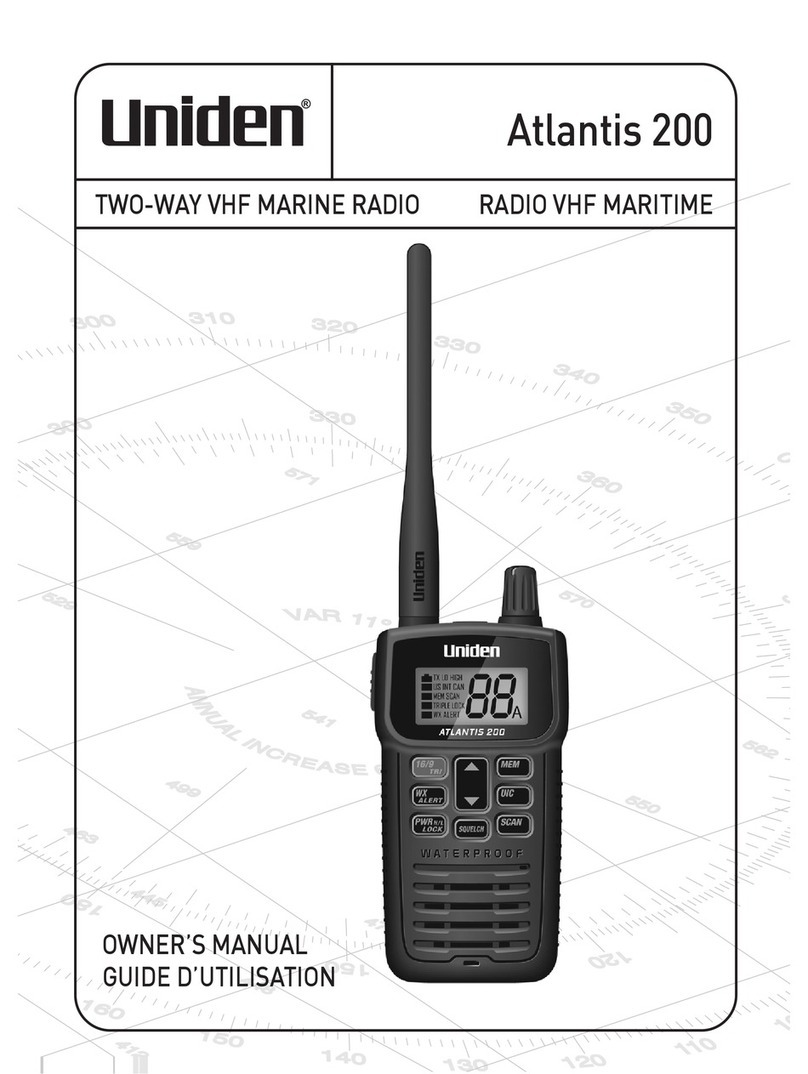
Uniden
Uniden ATLANTIS 200 Guide d'utilisation
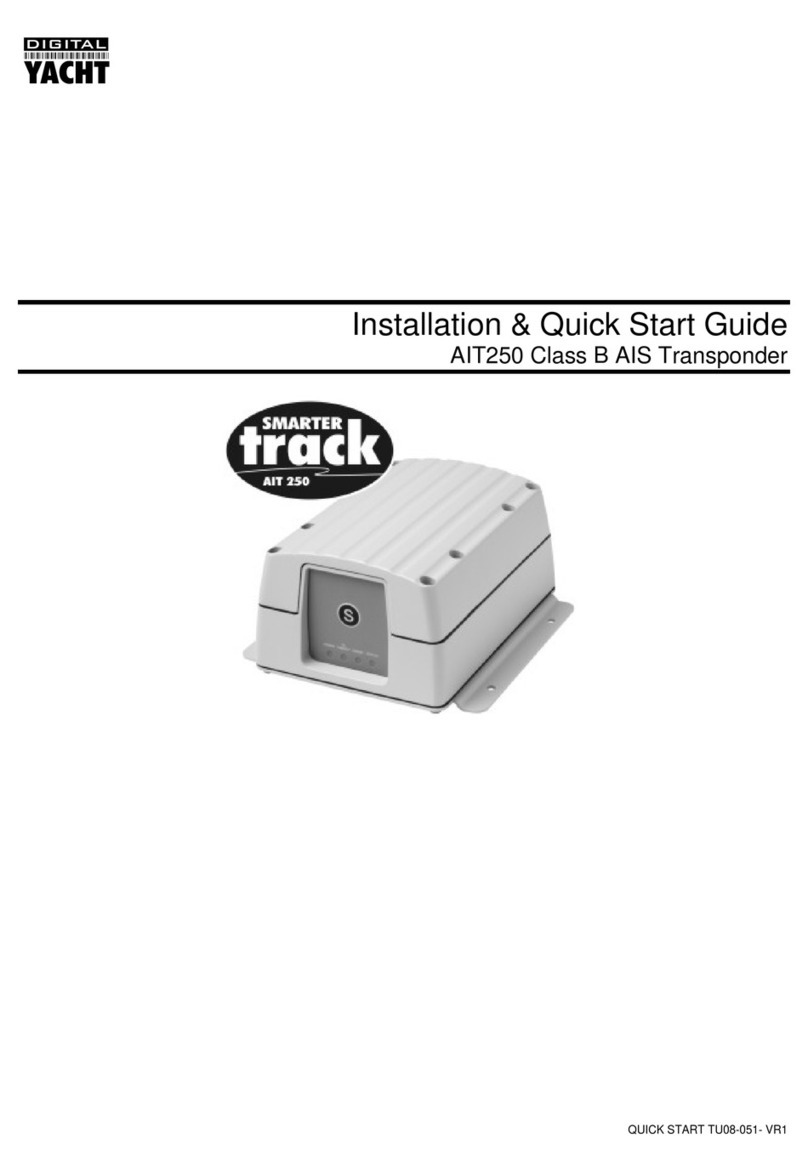
DIGITAL YACHT
DIGITAL YACHT AIT250 Installation & quick start guide
uAvionix
uAvionix tailBeaconX STC Instructions for Continued Airworthiness and Maintenance Manual
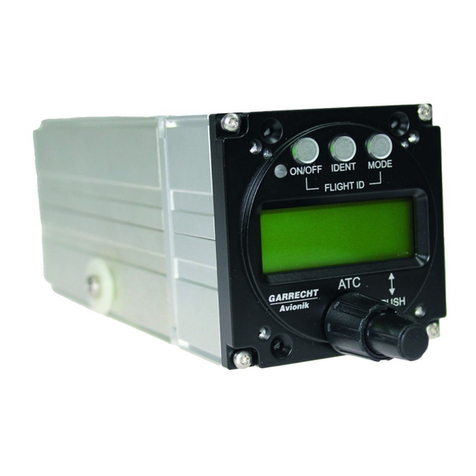
Garrecht Avionik
Garrecht Avionik VT-01 installation manual
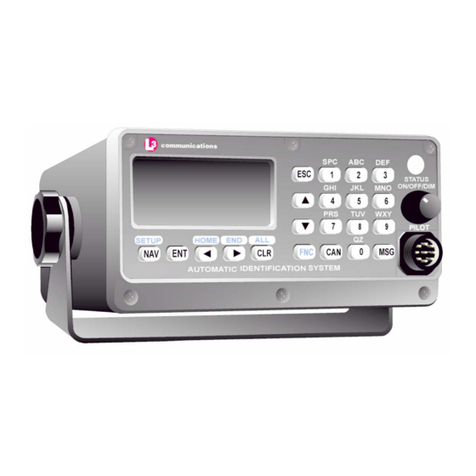
L3 Communications
L3 Communications ProTec AISA1000-10 Installation and operation manual
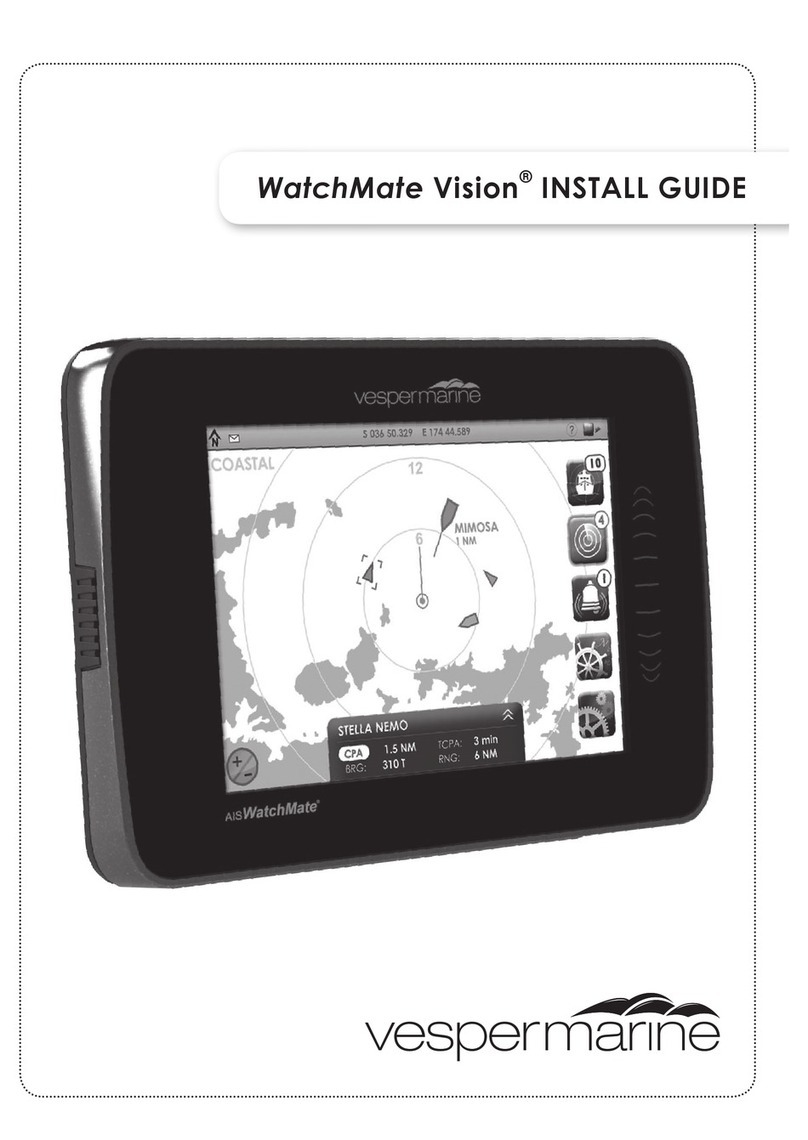
vesper marine
vesper marine WatchMate Vision install guide

